4 Ways to Sync iCloud Contacts with Outlook for Mac and PC
 25.8K
25.8K
 2
2
This article will show you how to sync iCloud contacts with Outlook for Mac as well as Windows.
iCloud is a cloud storage service from Apple, with a feature for you to manage contacts, while Outlook can refer to different products. Outlook can be Microsoft Outlook (an email client app), Outlook.com (an email service provider), or Outlook for Windows (the app released in 2023 to replace the former Mail and Calendar app in Windows).
There are two possible reasons to sync contacts from iCloud to Outlook: using your iCloud contacts in Outlook, or sharing the same contact list between iCloud and Outlook. The methods described in this article will cover both situations, as well as those various Outlook products.
 Cisdem ContactsMate
Cisdem ContactsMate
Sync iCloud Contacts with Outlook without Duplicates
- Support contacts from various sources: iCloud, Outlook, Mac, Google, etc.
- Let you transfer contacts between supported sources
- Import contacts from vCard and CSV files
- Export contacts from supported sources to 8 formats: CSV, Excel, vCard, etc.
- Let you easily view, search, edit, group, tag, share, print and sync contacts
- Find and delete/merge duplicate contacts
- Let you backup/restore contacts with a click
- Help you easily sync contacts from iCloud to Outlook.com
- Easy to use and powerful
- Compatible with macOS 10.11 or later
- (ContactsMate also has a Windows version with similar features but no support for iCloud)
 Free Download macOS 10.11 or later
Free Download macOS 10.11 or later
Method 1. Sync iCloud contacts with Outlook.com on Mac using ContactsMate
Applies to: macOS
If you have set up Outlook with your Outlook.com account and contacts can sync between the two, then you can use Cisdem ContactsMate, the best contact management app for Mac, to make things easier.
1. Download ContactsMate and install it.
2. When you open it for the first time, click OK to grant access.
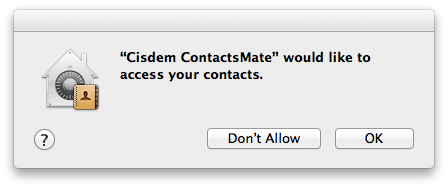
3. Click Add Account in the toolbar.

4. Choose iCloud and sign in to it.
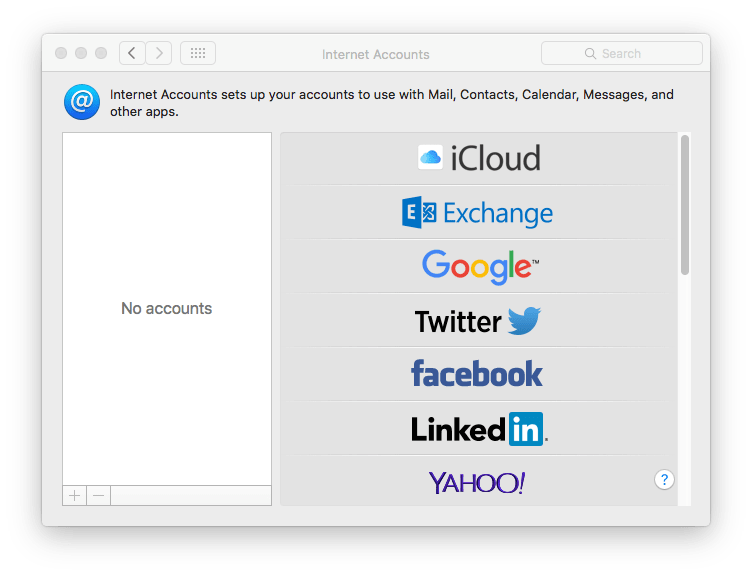
5. Select the box next to Contacts.
.png)
6. Click the plus icon + in the bottom left corner of the Internet Account window and choose Exchange. Sign in.
7. Select the checkbox next to Contacts.
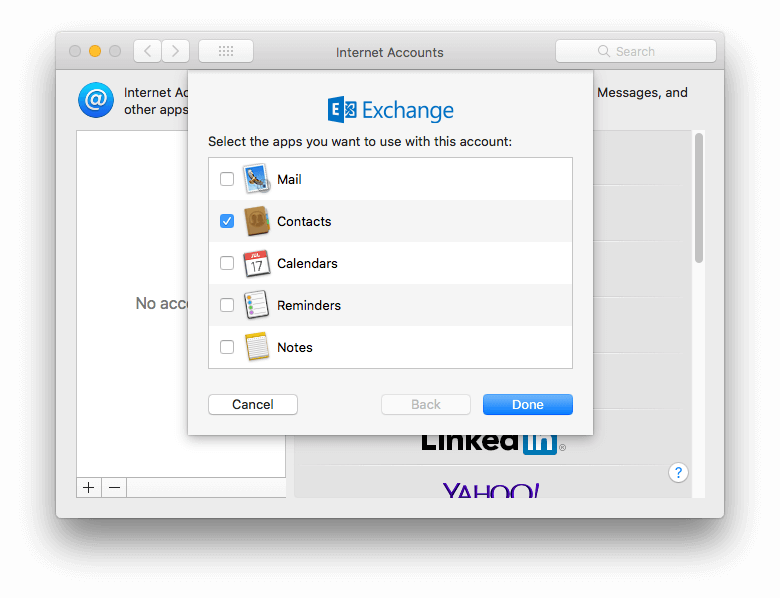
8. Go back to ContactsMate main window. Click the button next to the “Updated contacts detected” message. Now you should find iCloud and Exchange in the sidebar.
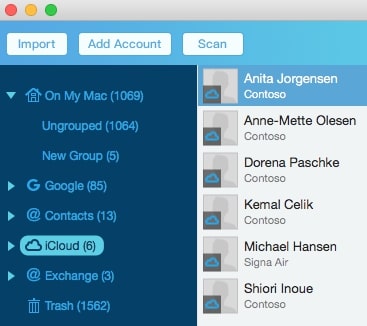
9. Select iCloud in the sidebar and mass select all iCloud contacts. Drag selected contacts into Exchange.
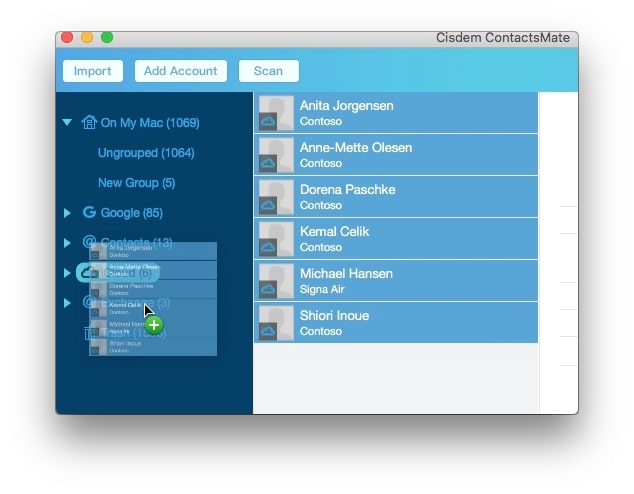
Wait for the sync to finish. Now you should be able to find your iCloud contacts in Outlook for Mac. Similarly, you can drag Exchange contacts into iCloud.
Tip: Remove or merge duplicate contacts after syncing
There’s a possibility that lots of duplicate contacts appear after you finish sync. Is annoyed to locate a particular contacts from cluttered address book. Don’t worry. Cisdem ContactsMate allows you to find and remove/merge duplicates efficiently. Go to the main window and select iCloud/Exchange in the sidebar. Click Scan in the toolbar. It’ll found duplicate contacts in seconds and list them clearly. Select a duplicate contact and choose a solution. Click Fix or Fix all.
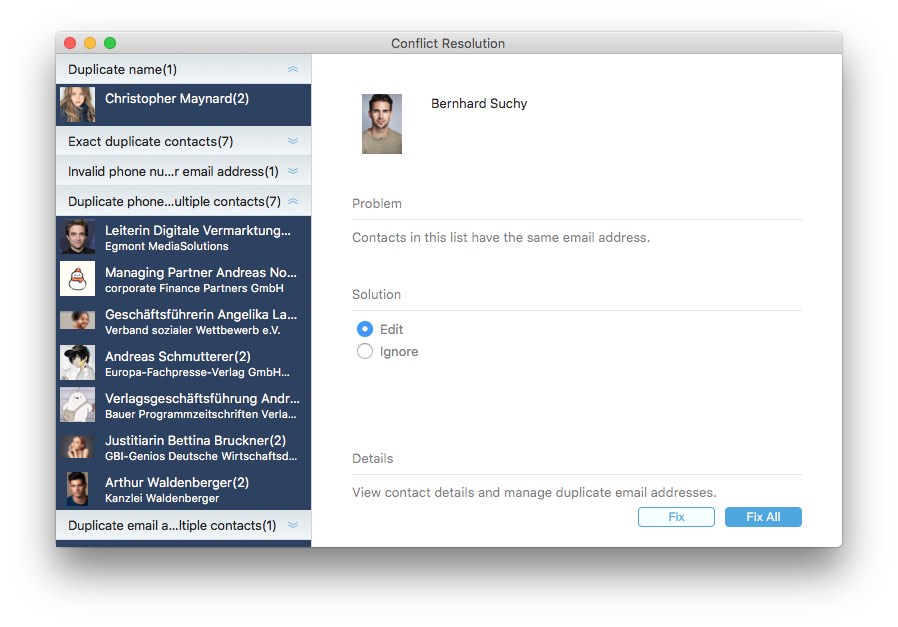
Method 2. Use SyncGene to sync iCloud contacts with Outlook for Mac and Windows
Applies to: macOS, Windows
If you are looking for a quick way to sync your iCloud contacts with Outlook, some third-party synchronization services that can help you with your need. SyncGene is one of them. With this cloud synchronization service, you are able to sync your contacts between iCloud, Outlook.com, Outlook 365 accounts and manage them in one place.
If you use SyncGene, you will need to let it access your info. Use caution with this method.
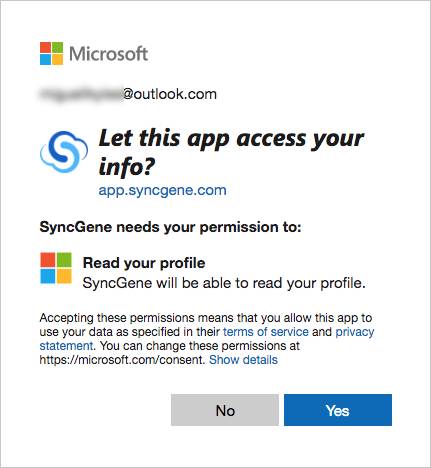
If you don’t trust such a third-party service, then you can skip this method.
1. On your web browser, go to SyncGene. Create an account. Agree to SyncGene’s Terms of use and Privacy Policy.
2. Go to sync status > ADD SOURCE.
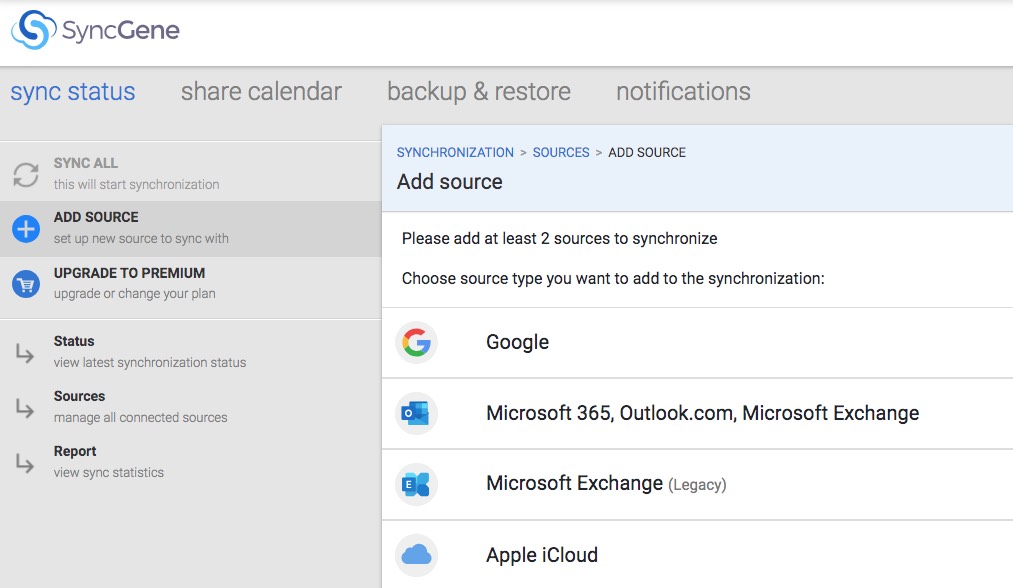
3. Select Apple iCloud and sign in to it. You can follow the instructions provided to generate an app-specific password.
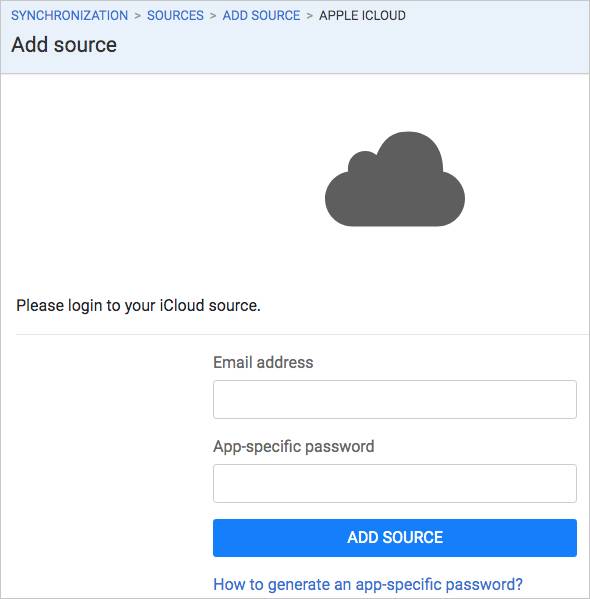
4. Select Microsoft 365, Outlook.com, Microsoft Exchange and add the source.
5. Click WHAT TO SYNC.
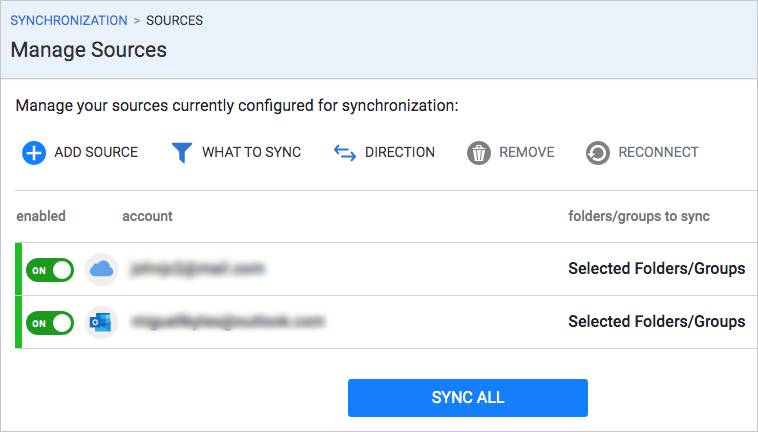
6. Click CONTACTS.
7. Configure settings. Click SAVE.
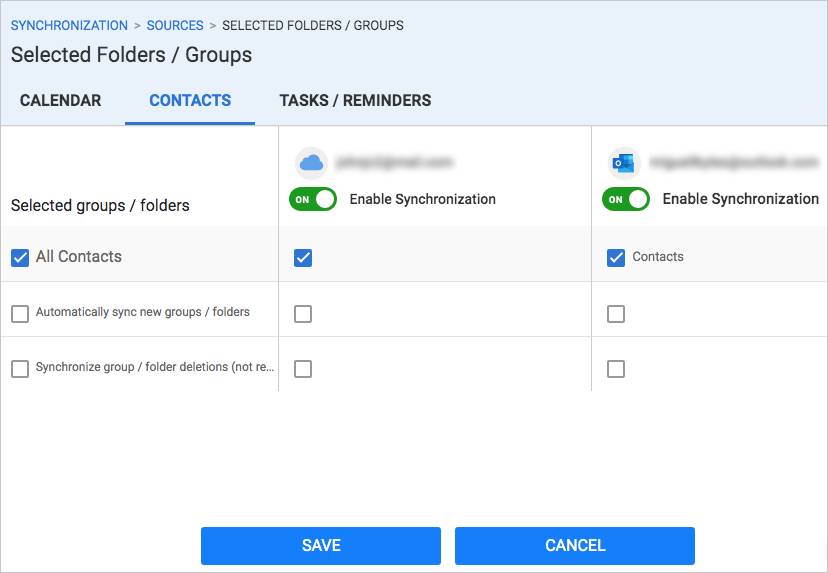
8. Click DIRECTION. Choose the desired direction. Click SAVE.
9. Click SYNC ALL.
Now you can verify that if it syncs iCloud contacts with Outlook.
Note that there could be sync errors. In our test, it did a good job of syncing newly added contacts, but it failed to successfully sync the previously existing iCloud contacts. In such a case, you can first export existing contacts from iCloud to Outlook.
Method 3. Use iCloud for Windows to sync iCloud contacts to Outlook
Applies to: Windows
For Windows users, the synchronization is easy thanks to the iCloud for Windows app. In addition to syncing iCloud contacts with Outlook, this method will sync Outlook Mail, Calendars and Tasks.
1. Download and install the latest version of iCloud for Windows app from Microsoft Store.
2. Sign in with your Apple ID and password.
3. Click Get Started.
4. Then it’ll let you select the apps/features that you want to sync. You can sync your iCloud Contacts to Outlook by clicking Sync Calendars and Contacts in the bottom right corner.
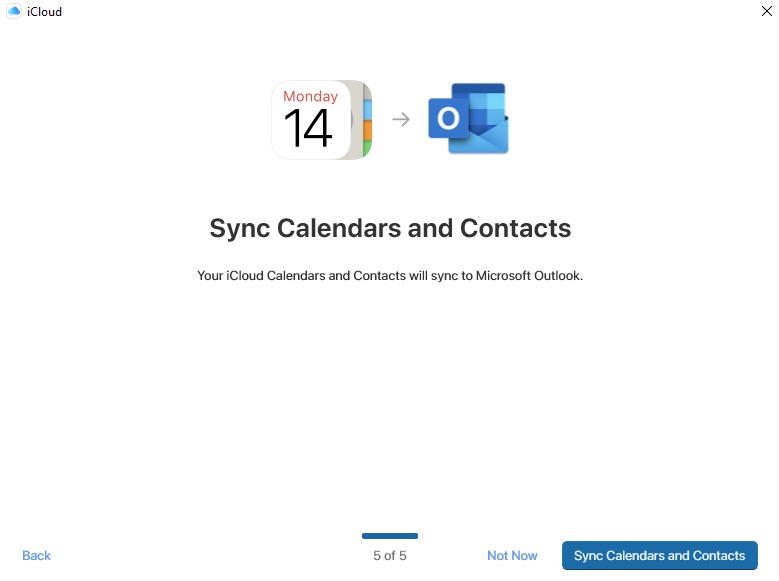
5. Click Done.
6. You will be presented with the Outlook Setup for iCloud window. You can choose to add all or certain iCloud Contacts to Outlook.
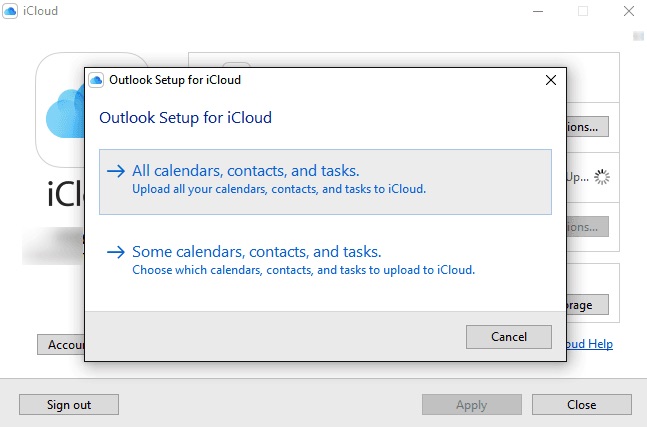
Now you will see your iCloud contacts in People in Outlook.
This is how you can sync contacts from iCloud to Outlook on Windows 11, Windows 10 or an older version.
With this method, if you experience the iCloud contacts not showing in Outlook issue or if you receive the Repair iCloud for Windows to use iCloud with Outlook message, you can try to uninstall and reinstall iCloud.
Method 4. Sync iCloud contacts with New Outlook for Windows
Applies to: Windows
In 2023, Microsoft released New Outlook for Windows, which is built into Windows 11. It can also be downloaded from the Microsoft Store. Officials did say it is planned to replace the Mail and Calendar apps built into Windows. Many users are looking for ways on how to sync iCloud contacts with this New Outlook for Windows. How to do it? Below are steps:
1. Enter Outlook in the Windows search bar. Select Outlook (new).
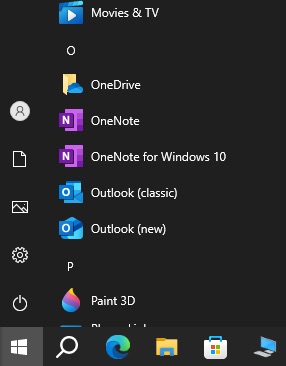
2. Sign in with your Apple ID and password in the “Welcome to the new Outlook” window. Click Continue.
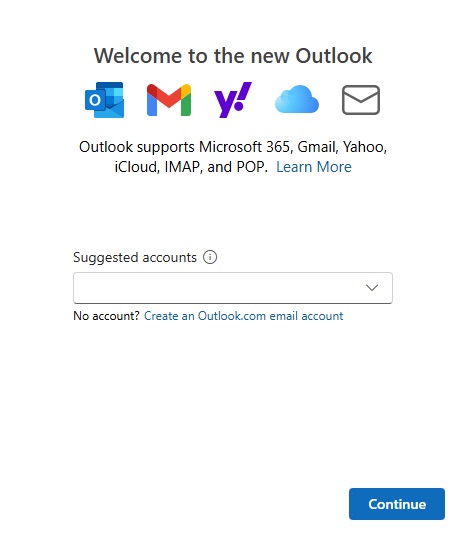
3. Click Next.
4. Select if you want to send optional data about Outlook to Microsoft. Click Accept.
5. Click Continue.
Now you should see your iCloud contacts in New Outlook for Windows.
FAQ
How do I get my iCloud contacts into Outlook?
There are two ways. You can export your contacts from iCloud and then import them into Outlook. You can also set contacts two sync between these two places.
How do I remove duplicates after adding iCoud contacts to Outlook?
It's common to have duplicates after you transferring contacts. You can manually look for them by sorting your contacts. You can also use a duplicate contact remover tool.
Conclusion
The possibility and practice to sync iCloud contacts with Outlook for Mac or other sources help improve our productivity. We hope that the methods described above will help you out. If you are a Mac user and want to sync, organize and manage your contacts with little effort and high efficiency, ContactsMate is recommended. It excels at importing/exporting contacts, syncing, backing up contact information to various formats, editing, and removing duplicate contacts, among other things.

With a passion for tech and writing, Sarah joined Cisdem, where she focuses on creating articles about using utility tools to enhance file management and simplify contact management.

Adrian Li is Cisdem’s Chief Engineer and serves as the editorial advisor for Duplicate Finder and ContactsMate. His work and insights have been featured in leading tech publications such as Fossbytes, TUAW, Redmond Pie, SafetyDetectives, and BestForAndroid.




Noah Rivera
Great article. The screenshots helped a lot. I used Method 3 on Windows and it worked fine.
Betriebswirtin
Thanks a lot, I've been searching for a solution to sync my iCloud contacts with Outlook too long. This post helped me.